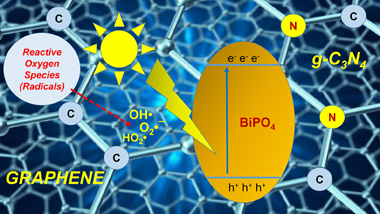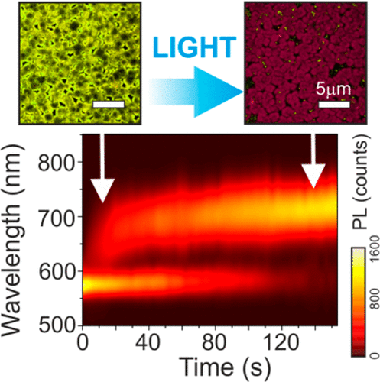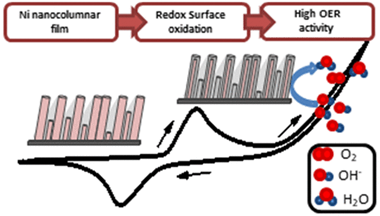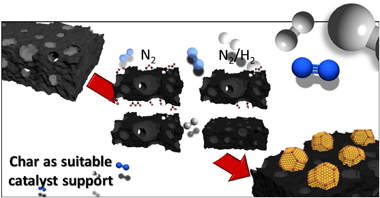Scientific Papers in SCI
2020
2020
Fotocatálisis Heterogénea: Aplicaciones
Recent progress on the enhancement of photocatalytic properties of BiPO4 using π–conjugated materials
Naciri, Y., Hsini, A., Ajmal, Z., Navio, J.A., Bakiz, B., Albourine, A., Ezahri, M., Benlhachemi, A.Advances in Colloid and Interface Science, 280 (2020) 102160
Show abstract ▽

Semiconductor photocatalysis is regarded as most privileged solution for energy conversion and environmental application. Recently, photocatalysis methods using bismuth-based photocatalysts, such as BiPO4, have been extensively investigated owing to their superior efficacy regarding organic pollutant degradation and their further mineralization into CO2 and H2O. It is well known that BiPO4 monoclinic phase exhibited better photocatalytic performance compared to Degussa (Evonik) P25 TiO2 in term of ultraviolet light driven organic pollutants degradation. However, its wide band gap, poor adsorptive performance and large size make BiPO4 less active under visible light irradiation. However, extensive research works have been conducted in the past with the aim of improving visible light driven BiPO4 activity by constructing a series of heterostructures, mainly coupled with π-conjugated architecture (e.g., conductive polymer, dye sensitization and carbonaceous materials). However, a critical review of modified BiPO4 systems using π-conjugated materials has not been published to date. Therefore, this current review article was designed with the aim of presenting a brief current state-of-the-art towards synthesis methods of BiPO4 in the first section, with an especial focuses onto its crystal-microstructure, optical and photocatalytic properties. Moreover, the most relevant strategies that have been employed to improve its photocatalytic activities are then addressed as the main part of this review. Finally, the last section presents ongoing challenges and perspectives for modified BiPO4 systems using π–conjugated materials
June, 2020 | DOI: 10.1016/j.cis.2020.102160
Reactividad de Sólidos
Electrochemically Exfoliated Graphene-Like Nanosheets for Use in Ceramic Nanocomposites
Poyato, R; Verdugo, R; Munoz-Ferreiro, C; Gallardo-Lopez, AMaterials, 13 (2020) 11
Show abstract ▽
In this work, the synthesis of graphene-like nanosheets (GNS) by an electrochemical exfoliation method, their microstructural characterization and their performance as fillers in a ceramic matrix composite have been assessed. To fabricate the composites, 3 mol % yttria tetragonal zirconia (3YTZP) powders with 1 vol % GNS were processed by planetary ball milling in tert-butanol to enhance the GNS distribution throughout the matrix, and densified by spark plasma sintering (SPS). According to a thorough Raman analysis and SEM observations, the electrochemically exfoliated GNS possessed less than 10 graphene layers and a lateral size lower than 1 mu m. However, they contained amorphous carbon and vacancy-like defects. In contrast the GNS in the sintered composite exhibited enhanced quality with a lower number of defects, and they were wavy, semi-transparent and with very low thickness. The obtained nanocomposite was fully dense with a homogeneous distribution of GNS into the matrix. The Vickers hardness of the nanocomposite showed similar values to those of a monolithic 3YTZP ceramic sintered in the same conditions, and to the reported ones for a 3YTZP composite with the same content of commercial graphene nanosheets.
June, 2020 | DOI: 10.3390/ma13112656
Materiales Ópticos Multifuncionales
Local Rearrangement of the Iodide Defect Structure Determines the Phase Segregation Effect in Mixed-Halide Perovskites
Tiede, DO; Calvo, ME; Galisteo-Lopez, JF; Miguez, HJournal of Physical Chemistry Letters, 11 (2020) 4911-4916
Show abstract ▽

Mixed-halide perovskites represent a particularly relevant case within the family of lead-halide perovskites. Beyond their technological relevance for a variety of optoelectronic devices, photoinduced structural changes characteristic of this type of material lead to extreme photophysical changes that are currently the subject of intense debate. Herein we show that the conspicuous photoinduced phase segregation characteristic of these materials is primarily the result of the local and metastable rearrangement of the iodide sublattice. A local photophysical study comprising spectrally resolved laser scanning confocal microscopy is employed to find a correlation between the defect density and the dynamics of photoinduced changes, which extend far from the illuminated region. We observe that iodide-rich regions evolve much faster from highly defective regions. Also, by altering the material composition, we find evidence for the interplay between the iodide-related defect distribution and the intra- and interdomain migration dynamics giving rise to the complexity of this process.
June, 2020 | DOI: 10.1021/acs.jpclett.0c01127
Nanotecnología en Superficies y Plasma
Chemistry and Electrocatalytic Activity of Nanostructured Nickel Electrodes for Water Electrolysis
Lopez-Fernandez, E; Gil-Rostra, J; Espinos, JP; Gonzalez-Elipe, AR; Consuegra, AD; Yubero, FACS Catalysis, 10 (2020) 6159-6170
Show abstract ▽

Herein we have developed nanostructured nickel-based electrode films for anion exchange membrane water electrolysis (AEMWE). The electrodes were prepared by magnetron sputtering (MS) in an oblique angle configuration and under various conditions aimed at preparing metallic, oxide, or oxyhydroxide films. Their electrochemical analysis has been complemented with a thorough physicochemical characterization to determine the effect of microstructure, chemical state, bilayer structure, and film thickness on the oxygen evolution reaction (OER). The maximum electrocatalytic activity was found for the metallic electrode, where analysis by X-ray photoelectron spectroscopy (XPS) and X-ray absorption spectroscopy (XAS) demonstrated that the active catalytic phase at the surface after its electrochemical conditioning is a kind of oxidized nickel oxide/hydroxide layer with the thickness of a few nanometers. Electrochemical impedance spectroscopy analysis of these steady-state working electrodes supports that the enhanced performance of the metallic nickel anode vs other chemical states resides in the easier electron transfer through the electrode films and the various interlayers built up during their fabrication and activation. The long-term steady-state operation of the anodes and their efficiency for water splitting was proved in a full-cell AEMWE setup incorporating magnetron-sputtered metallic nickel as the cathode. This work proves that MS is a suitable technique to prepare active, stable, and low-cost electrodes for AEMWE and the capacity of this technique to control the chemical state of the electrocatalytically active layers involved in the OER.
June, 2020 | DOI: 10.1021/acscatal.0c00856
Química de Superficies y Catálisis
Reductant atmospheres during slow pyrolysis of cellulose: First approach to obtaining efficient char -based catalysts in one pot
Santos, JL; Centeno, MA; Odriozola, JAJournal of Analytical and Applied Pyrolysis, 148 (2020) 104821
Show abstract ▽

Char based metallic (Pd-Au-Ru-Pt/C) catalysts have drawn increasing research interest due to their versatility in biomass related industrial reactions. Recent studies dealing with the synthesis of char-based catalysts in one single step (one-pot) use reductant atmospheres for biomass pyrolysis. In this work, the influence of the use of a reductant N2/H2 atmosphere on the physicochemical properties of the resulting chars was evaluated in comparison with the use of an inert N2 atmosphere. Specifically, the fundamental parameter of the pyrolysis process, the temperature, was evaluated in the 500−900 °C range. Produced chars were fully characterized by N2 isotherms, ultimate CHNS analysis, X-ray Diffraction, Raman spectroscopy, Diffuse Reflectance Infrared spectroscopy, X-ray Photoelectron spectroscopy, helium Temperature Programmed Decomposition and Isoelectric Point analysis. Slow pyrolysis under reductant atmosphere favours deoxygenation reaction against dehydrogenation ones, reduces the carbon yield and results in chars with a more hydrophobic and graphitic character, higher thermal stability and weak surface functionalization. The use of intermediates temperatures (700 °C) favours the obtaining of chars with suitable physicochemical properties and good surface functionalization, which will facilitate the anchoring of the active phase on the surface, improving the metallic dispersion of the resulting one pot catalyst. This leads us to affirm that the use of reducing atmospheres at intermediate temperatures, is superior to the use of inert atmospheres for this purpose. This analysis on the impact of the use of a reductant atmosphere during slow pyrolysis of microcrystalline cellulose opens a new working path for the optimization of char-based catalysts obtained in a single stage.
June, 2020 | DOI: 10.1016/j.jaap.2020.104821
- ‹ previous
- 98 of 410
- next ›














